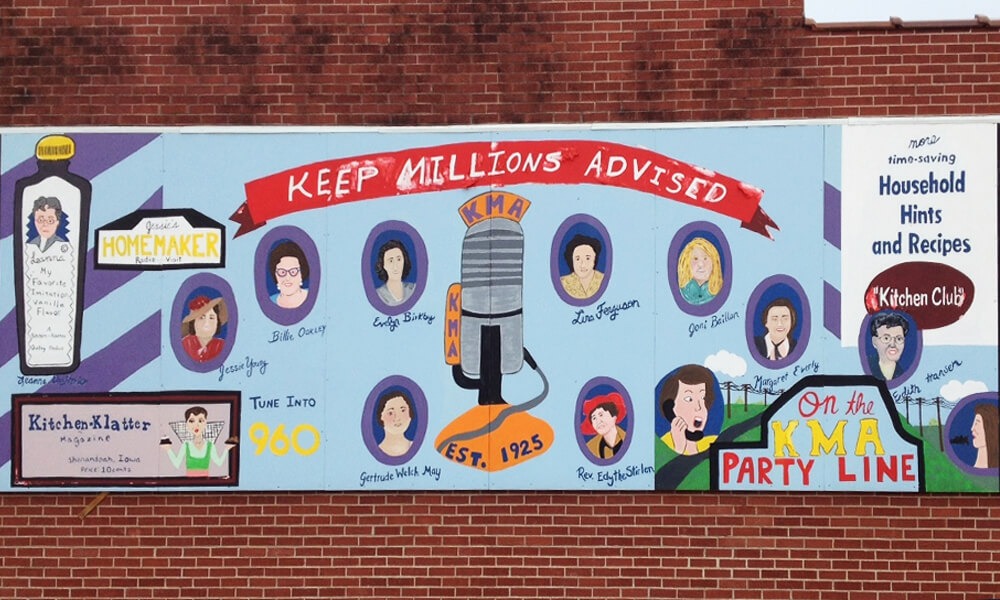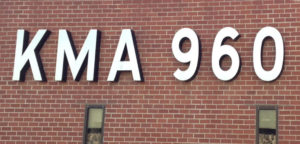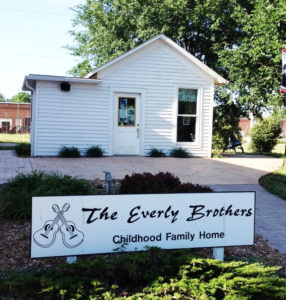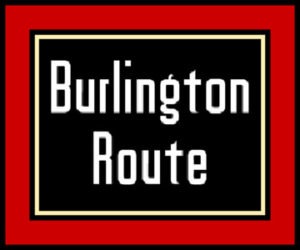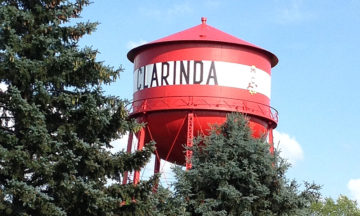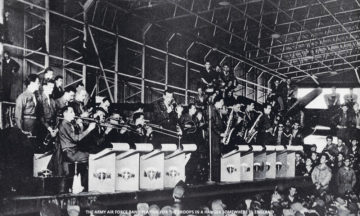This is an encore of a Musings which first appeared on this page just over four years ago in December 2018, telling of a trip we took in June of that year. It would be the last big trip my beloved Alicia and I would take together, as she was awaiting knee replacement surgery which was soon followed by a cancer diagnosis … a battle she’d lose just three months after this story was published.
The small town I’m referencing is Shenandoah, Iowa … which has a population of little more than 5,000 and is located in the southwest corner of the state, some 60 miles east of Omaha, Nebraska.
Alicia and I stayed here while attending the Glenn Miller Festival this past June in Clarinda, which lies about 20 miles further east but has little in the way of hotel accommodations. While I’d never been to Shenandoah previously, I long have been aware of its role in radio broadcasting history.
You see, in the annals of broadcasting, KMA-AM is unique. Not only because it still provides true locally-focused service to this region, but more so its history. It began broadcasting on August 12, 1925, having been put on the air by one Earl May, who some years earlier launched the Earl May Seed Company. Yes, that’s what makes the station unique — now, 93 years later … the station is still owned and operated by the Earl May Seed Company, which remains under May family ownership and is managed by Earl May’s granddaughter – the only station in the nation which can make that claim.
These two large murals are painted on the side of the KMA building, which sits directly across the street from the Seed Company headquarters in the heart of Shenandoah. They are the work of the instructors and students — who range in age from eight to 14 — of the Wabash Arts Camp, which is held one week each summer there in Shenandoah.
That’s the “Radio” part of our story … the “Records” portion comes from Shenandoah being the home of Don and Phil, the Everly Brothers, during their “growing up” years. The duo is perhaps best remembered for their first #1 hit, “Wake Up, Little Susie,” along with several others which made the pop charts. Just a few years later would come this song, which stayed on the charts the longest, “All I Have To Do Is Dream.”
The boys were first heard singing publicly when they joined their father Ike, who had a daily show on KMA, and were introduced as “Little Donnie and Baby Boy Phil.”
It just so happens that this past Sunday, March 26th, the CBS TV network included a feature segment on their popular Sunday morning magazine program about the two Everly boys, which you can watch here.
As a side note, what strikes me is the similarities between the early lives of the Everly Brothers, Elvis Presley and bandleader Glenn Miller … all of whom were born into poor families, yet this did not keep them from achieving great success and fame. The Everly house pictured here is larger than Elvis’s home in Tupelo, Mississippi but no larger than Glenn Miller’s birth home in Clarinda, the next town over, which did not even have running water.
Shenandoah began life as a village named Fair Oaks, which was settled after the Chicago, Burlington and Quincy Railroad — known as the Burlington Route — arrived in the area in 1870. After a few years, it was decided that a more appropriate name for the growing community would be Shenandoah, based on the local valley’s resemblance to the Shenandoah Valley region of Virginia.
As for the railroad, 150 years and numerous mergers later, the “Burlington” name continues to be represented — the “B” in the name of one of the nation’s largest railroads, BNSF Railway, serving the western two-thirds of the United States.
